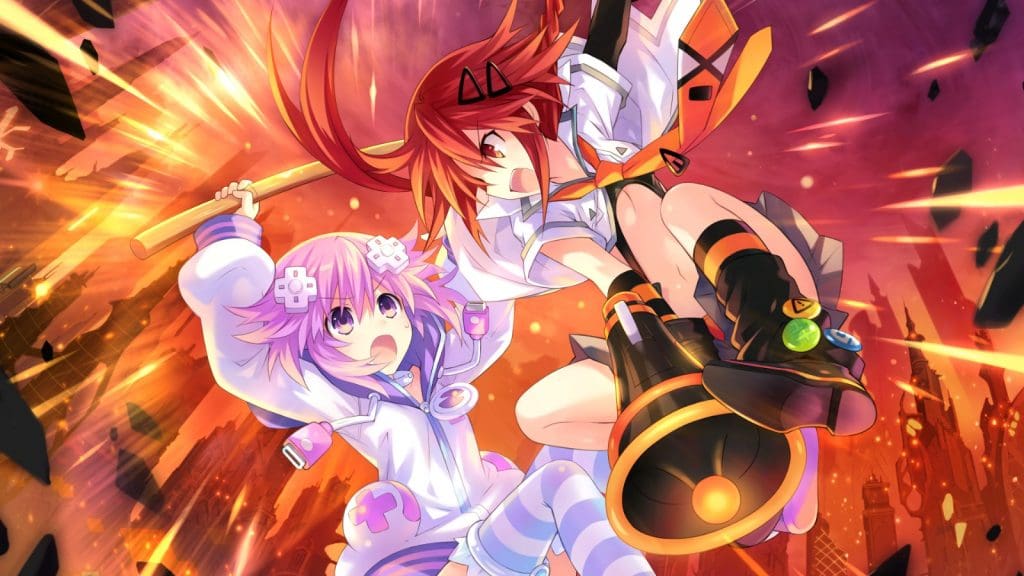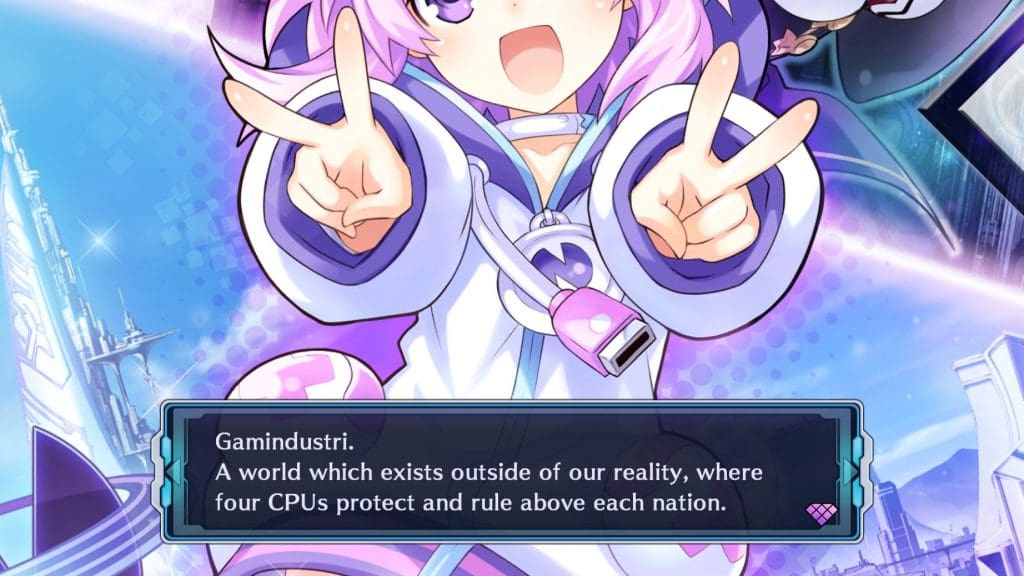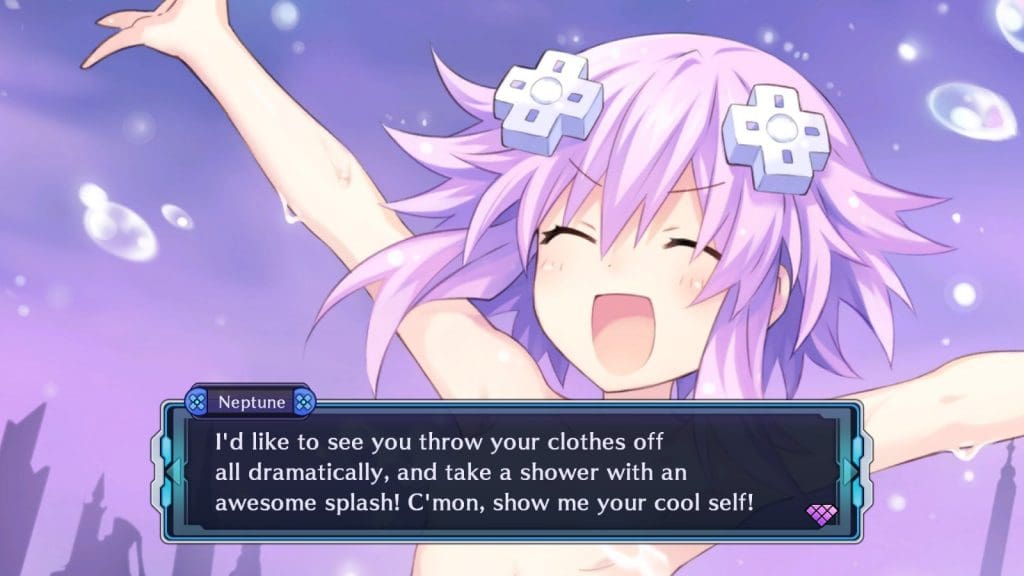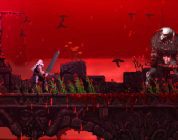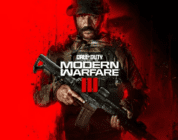To get this out of the way: I’ve never played a Megadimension game, before – I’d never heard of the series, if I’m being perfectly honest, but when I heard of the meta premise, I had to give it a try.
Have you ever played a game that makes you go, “Oh, my god”? Where the story is there, the plot is discernible, then out of nowhere, things get weird? Megadimension Neptunia VII is a JRPG that seems to thrive on it, depending on that tactic for its very survival. It’s not that the game isn’t good – quite the opposite – but the entire experience feels as though several people got together with the idea of making a game, knew the general plot, then created their own sections independently of one another, which they then just stuck together for the final product. I have no idea if this is normal for the series. For the sake of the review, I’m going to assume it is, because it’s hilarious.
The crux of the plot is that there is a group of CPUs (i.e. personifications of gaming consoles) that band together in three stages to defend against threats and save those worlds from utter destruction. It’s simple enough, but the fun part is the reason they’re having to save the worlds: There is an occasional event that occurs which essentially pits the CPUs against each other in a sort of popularity contest; this event is called the CPU Shift. The more people are interested in the console, the more the world that represents the console thrives. This topic is obviously relevant in the gaming world, as new consoles are introduced all the time, and each tries to outdo the others with titles and goodies that entice buyers. The consoles that people move away from suffer, while those with the best features continue to exist in relative comfort.
The two main characters, Neptune and Nepgear, are sisters that reside in the world of Gameindustri (seriously), where they live relatively uncomplicated lives in Planeptune (a reference to an unreleased Sega console – since it was unreleased, they’re not really experiencing any of the hardships of the CPU Shift). As the world is preparing for the event, Neptune hears a voice calling from an old console (it’s a Dreamcast, let’s be real), asking for help. After she brings it back to headquarters, she and her sister are pulled into an alternate dimension, where they are faced with new challenges and enemies while trying to figure out what the hell is going on. Rinse, repeat, that’s the game. Yes, they meet new people, and they become progressively more involved in the stories surrounding the other characters, but this isn’t a complicated RPG story – the real draw for Megadimension Neptunia VII is the graphics…both technically and, uh, hormonally?
Technically, the graphics are very good. The colors are sharp, the fight animations are very nice, and the character design is pretty cool. The HUD is pretty standard for the kind of JRPG console games folks have become accustomed to, and it’s fairly easy to navigate. The game is, in short, very pretty. The character dialog screens (there are so many of them…) feature adorable expressions and pretty backgrounds; they’re obviously not fully animated. The static changes in expression, and the variable (i.e. player-controlled) pace of the dialog makes it more palatable for those who might otherwise get antsy with such distractions (i.e. me).
The hormonal graphical triumphs are well-known to those who play visual novels: There is quite a bit of fan service, and while this is completely and totally out of context of the game’s plot, I suppose it’s responsible for just as many sales as any other aspect, so you do you, Idea Factory. (For those unfamiliar with the concept of “fan service,” it runs anywhere from skimpy outfits and suggestive poses for characters all the way to situations that wouldn’t be out of place in a soft-core porn, and Megadimension Neptunia VII happens to fall into the latter category, hence its T rating). It’s not even particularly poorly-designed, it’s just jarring, to me. Then again, I’m not the target audience.
The other countries involved in this CPU Shift are representations of consoles such as Playstation (Lastation). Xbox (Leanbox), and Lowee (Wii). All of the characters from these countries come together in three separate stories threaded together in the main title, and their personalities are based upon what I view is a real-world attitude toward the consoles. The Lastation character, for example, is very defensive about her popularity, and there is a lot of posturing. It’s not tongue-in-cheek so much as it is gleeful poking at the consoles’ situations. There are nods to the game journalism industry in the way of smaller characters who are essentially just menu selections in towns. These characters offer up anecdotes about scooping other journalists, while encouraging the player to utilize their “help” menu often. If you’re not a frequent JRPG player, this is advice to heed.
For PC gamers who prefer to use a mouse and keyboard, you’re out of luck – this game only recognizes controllers. I used an Xbox 360 controller, and even though the control screens were fairly crowded (again, this is standard for RPGs of this type), the navigation was smooth and very clear. The buttons weren’t assigned in any different a way as in other games – “B” would go back a screen, “A” would select items, and navigation between characters in the menu could be accomplished using the bumpers. I experienced very little trouble at all with navigation and character control. Any issues a player might have can be chalked up to user error, because the controls here are nearly flawless.
The gameplay is accomplished mostly through dungeons. This, again, isn’t an unfamiliar concept. The floors themselves are static, but random enemy groups spawn throughout the dungeon to impede progress to the goal. By the time each dungeon is reached, however, the characters are generally at levels where they can just farm the creatures. This is what I ended up doing for much of the game. Events appear as icons in these dungeons, and this is where the plot explanations and dialog will take place. Save points and secret containers are also scattered throughout, making exploration a necessity as well as an XP boon. The game isn’t particularly difficult, in all honesty. This is coming from someone who is, overall, not a huge fan of the genre due to impatience with turn-based combat. I could play Megadimension with very little trouble, and was only slightly annoyed at the long dialog screens.
The sound design is excellent – the voice acting of Uzume, in particular, is delightful. The music is catchy, but not overwhelming, and for those who’d prefer to have control over how loud nearly every aspect of the soundboard is, the menu provides a way to basically bend the sounds to your will. I low-key love the title theme, as well, which you can hear in the preview video in the title bar, above. There are some legitimately horrible sound effects, however, and they’re mainly centered around the enemy sounds alerting characters of incoming combat during their dialog screens. It’s frankly hilarious, and I can’t tell if that’s the intended effect or not, due to the rest of the game being offbeat at times.
I’m going to have to go ahead and say that despite the really strange overall feel of Megadimension Neptunia VII, it’s a game that I feel like a specific group of gamers will greatly enjoy, while a more general group will have some fun playing, period. Fans of JRPG games, visual novels, and fan service will spend their time in adulation. Everyone else can enjoy how smoothly the game itself works, while enjoying the excellent combat and skipping through the dialog (none of it is really crucial for the game) to get to the action. It’s not exactly my cup of tea, but I didn’t hate it, and can see where the positive player reviews are coming from. There’s even some replay value in the battles, where trying different attacks and combinations yields different results. Just beware the random boobs, and you’ll be fine.
Megadimension Neptunia VII was released on July 5, 2016 on Steam for PC. It can be purchased here for $49.99 USD. Check out the game’s website for more information and assets.

